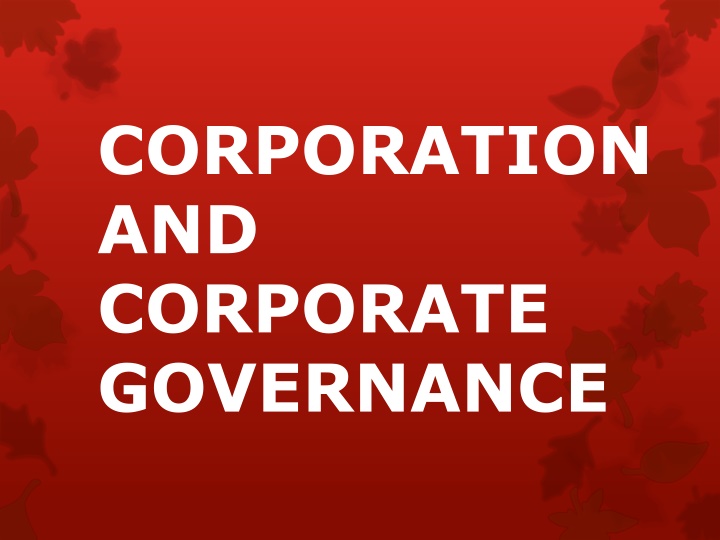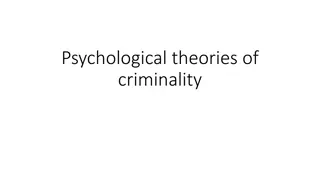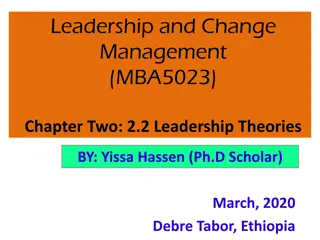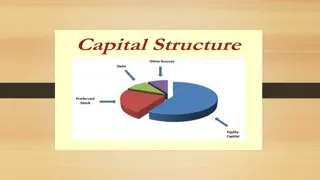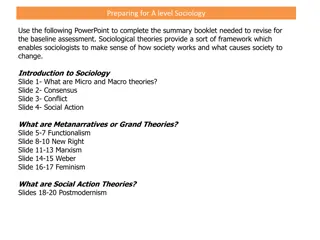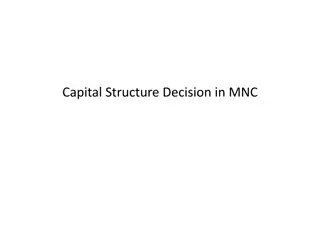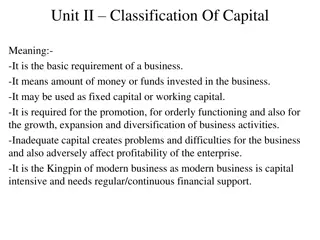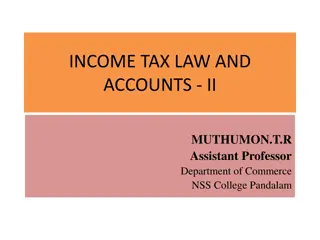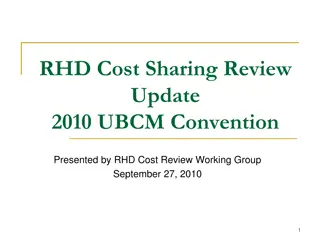Capital Structure Theories and WACC Impact
This final part of the financial strategy series delves into capital structure theories, focusing on how the balance between equity and debt impacts the Weighted Average Cost of Capital (WACC). Learn about the significance of structuring a company's capital effectively and the implications on financial ratios and valuation.
Download Presentation

Please find below an Image/Link to download the presentation.
The content on the website is provided AS IS for your information and personal use only. It may not be sold, licensed, or shared on other websites without obtaining consent from the author.If you encounter any issues during the download, it is possible that the publisher has removed the file from their server.
You are allowed to download the files provided on this website for personal or commercial use, subject to the condition that they are used lawfully. All files are the property of their respective owners.
The content on the website is provided AS IS for your information and personal use only. It may not be sold, licensed, or shared on other websites without obtaining consent from the author.
E N D
Presentation Transcript
CORPORATION AND CORPORATE GOVERNANCE
WHAT IS CORPORATION? An artificial being created by operation of law, having the right to succession and the powers, attributes and properties expressly authorized by law or incident to its existence (The Corporation Code of the Philippines, Sec. 2 Watch video: What is corporation
Characteristics of Corporation: Artificial Being Created by operation of Law Right of succession Powers, Attributes and Properties
STAKEHOLDERS OF A CORPORATION
Management: Refers to the party given the authority to implement the policies as determined by the Board in directing the course/business activities of the corporation.
CREDITORS This refers to the party who lend to the corporation goods, services or money
SHAREHOLDERS: This refers to people who invest their capital in the corporation
EMPLOYEES These are the people who contribute their skills, abilities, and ingenuity to the corporation
CLIENTS They are the buyers of the corporations products and services
Government It is the duty and responsibility of the government to provide the people the basic ways and means to survive and the government gets the biggest help from the corporation
PUBLIC The result of responsible or irresponsible conduct of corporations can affect public in so many ways
PURPOSES OF CORPORATION Watch: role of corporation
Early Stage Survival To increase Profit To offer Vital Services to the General Public
To offer Goods and Services to the General Public To offer Goods and Services to the Mass Market
SHAREHOLDERS Shareholders or Stockholders are artificial or natural persons that are legally regarded as owners of the corporation
STOCKHOLDERS OR SHAREHOLDERS RIGHT
The right to vote on matters such as elections of the board of directors The right to propose the shareholder resolution
The right to receive dividends Pre-emption right which is right to purchase new shares issued by the company
The right to liquidating dividends
BONDHOLDERS Person or entity that is the holder of a currently outstanding bond Check video bondholders
BOARD OF DIRECTORS Refers to a collegial body that exercises the corporate powers of all corporations formed under the Corporation Code.
DUTIES OF THE BOARD OF DIRECTORS Watch Video BOD Functions
Establishing Policies and Objectives Selecting, appointing, supporting and receiving the performance of the chief executive Ensuring the availability of adequate financial resources
Approving annual budget Accounting to the stakeholders the organizations performance
MULTINATIONAL AND TRANSNATIONAL CORPORATIONS Watch video: TNC MNC
CORPORATE GOVERNANCE Structures or process by which companies are directed and controlled that will help them to operate more efficiently, mitigate risk and safeguard against mismanagement
WHAT GOOD GOVERNANCE PROMOTES? Watch: Good Governance
BENEFITS OF GOOD GOVERNANCE
Reduced Vulnerability Marketability Credibility Valuation
PRINCIPAL AGENT RELATIONSHIP
ROLES OF NONEXECUTIVE DIRECTORS -Is a member of the board of directors of a company who does not take part in the executive functions of the management team.
Strategy-offer creative contributions Establishing networks Monitoring Performance Audit- ensure that the company report properly to its shareholders
ROLES OF CFO Watch: CFO role
Implements internal control-convey important financial control Supervises major impact Projects Develop relations with financial sources Advisor to management
Drives major strategic issues Risk Manager Relationship role Objective referee
AUDIT COMMITTEE Watch : Audit committee
Examples of issues that the audit committee should consider: Risk identification and response Pressure to manage earnings Internal controls and company growth
EXTERNAL AUDITORS Used extensively by business organizations to cast away doubts on the information given by the management which are also generated under its direct control
REFERENCES: Good Governance and Social Responsibility Made Easy By: Biore, Gonzales, Caparas, Burgos, and Ballada 2015
